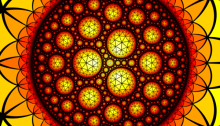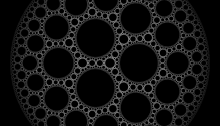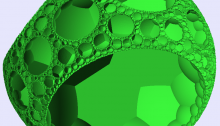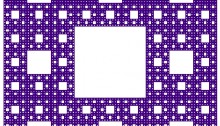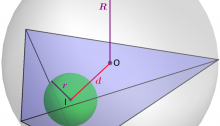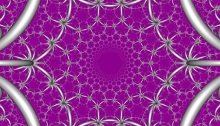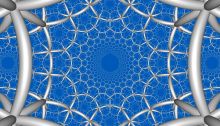{3,3,7} Honeycomb Meets Plane at Infinity
The {3,3,7} honeycomb is a honeycomb in 3d hyperbolic space. It is the dual of the {7,3,3} honeycomb shown last time. This image, drawn by Roice Nelson, shows the ‘boundary’ of the {3,3,7} honeycomb: that is, the set of points on the ‘plane at infinity’ that are limits of points in the {3,3,7} honeycomb.

